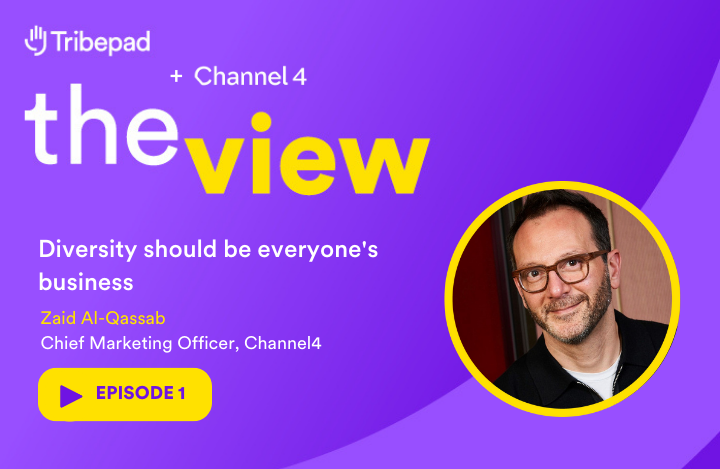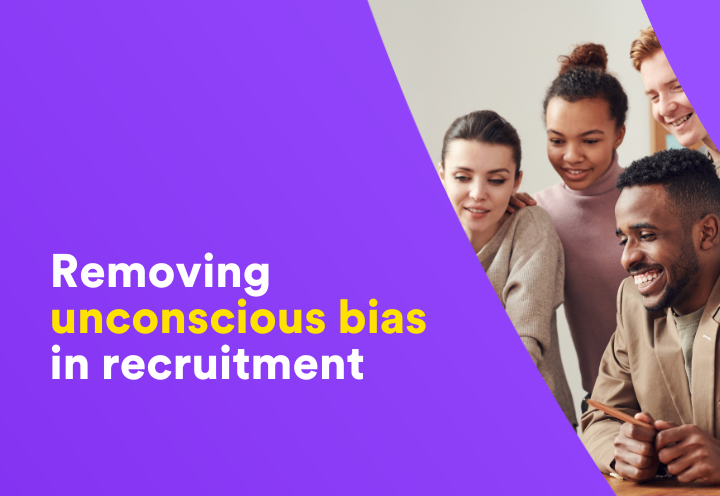Many organisations still struggle with removing unconscious bias in recruitment.
Unconscious bias remains a major hurdle to building a fairer, more inclusive recruitment process – and a more inclusive, diverse workforce that’s better for everyone.
Recruiters are either the gatekeepers or pioneers of change. Let’s talk about being the latter.
Understanding unconscious bias in recruitment
Removing unconscious bias in recruitment starts with understanding. You might think you know the ins and outs of unconscious bias but our research shows that knowledge might not be as good as you think…
Let’s start with Harvard Business School’s definition of unconscious bias:
Unconscious or implicit bias is the term for the mental processes that cause a person to act in ways that reinforce stereotypes even when in our conscious mind we would deem that behaviour counter to our value system. Closely related to unconscious bias is affinity bias in which people tend to gravitate towards others who look, act, and think as they do.
In recruitment, unconscious bias (and affinity bias) can happen at any stage in the recruitment process and from anyone involved with recruitment.
Like:
- Recruiters might favour CVs from a certain university
- Managers might favour candidates who look similar to them
- Colleagues might be more welcoming to new hires from the same culture
Unconscious biases are the split-second judgements we’re socially conditioned to make about people, without realising we’ve been judgemental.
If we don’t tackle unconscious bias, it hurts recruitment and the wider organisation:
- Decreases chances of hiring the best person
- Encourages drop-outs and early turnover
- Creates a stagnant culture that’s less able to innovate
What triggers unconscious bias?
Any characteristic can trigger unconscious bias. Some are the protected characteristics that probably come immediately to mind, like race and gender. Others might be less immediately obvious, but they’re no less common.
Our Stop the Bias research last year uncovered the ten biggest biases that applicants feel impact their chances at securing a job:
- Age (too old) – 64.4%
- Personal appearance – 19.6%
- Disability or learning needs – 17.6%
- Gender or gender identity – 17.4%
- Race or ethnicity – 15.5%
- Weight – 14.6%
- Age (too young) – 13.5%
- Accent – 13.3%
- Mental health – 12.6%
- Being a parent – 12.6%
The sheer variety of this list is eye-opening – but it’s also interesting because there’s
a real mismatch between jobseekers’ concerns and organisations’ priorities. Look at the findings from our research with The FIRM last year, asking HR leaders about their ED&I focus areas:
- Ethnicity – 92%
- Gender – 87%
- Disability – 72%
- Part-time working/Flexible working – 62%
- Socio-economic background – 81%
- Gender identity – 51%
- Age – 41%
- Sexual orientation – 36%
- Religion/belief – 23%
- Other – 5%
It’s great to see such big percentages alongside many of these, but it also shows there’s work needed to ensure we’re focussing on what matters to candidates.
We need to turn over every stone. Only then can we start removing unconscious bias and building an inclusive recruitment process.
Unconscious bias is nobody’s fault – but everybody’s responsibility
It can be difficult to meaningfully tackle unconscious bias because people often struggle to acknowledge their role. Few people are consciously biased, and unconscious biases can be hard to spot.
Let’s assume your organisation passionately cares about building a workforce that represents your community. Everyone’s totally on board and you’re doing a fantastic job at addressing “obvious” priorities like ethnicity and gender.
But unconscious bias is almost definitely still happening.
- It’s the hiring manager who unconsciously assumes they’ll hire a Gen Z candidate for the social media manager role.
- It’s the recruiter who unconsciously disregards a CV for unusual formatting, because the candidate used a screen reader programme to create it.
According to the Inclusivity Project, the employment rate for disabled people in the UK is 28% lower than for non-disabled people. Their research finds significant unconscious bias against disabled people causing an instant barrier to recruitment, with persistent myths about lower productivity, high physical adaptation costs and high absenteeism.
- It’s the Liverpudlian candidate who misses out on the leadership role in London because of implicit biases about their accent.
Our Stop the Bias research found that Liverpool has the highest percentage of jobseekers who worry their accent could be hindering their career: 17.2%.
- It’s the working parent who faces unconscious assumptions they aren’t as committed as other applicants, because they have to leave for the school run.
- It’s the interviewee who uses pronouns the hiring manager feels unconsciously awkward about, hurting their chances at progressing.
Recent research shows candidates using they/them pronouns are more likely to be overlooked. The study found that CVs including these pronouns received 8% less interest than the same CV without pronouns.
- It’s the successful hire who leaves during their first week because their manager treats them differently from peers who weigh less.
A big part of tackling unconscious bias is surfacing these moments, dissolving any defensiveness, and helping everyone realise they have a responsibility for change.
Is unconscious bias training the answer?
Unconscious bias training is an answer, for sure. There’s a definite education and awareness piece to removing unconscious bias. But training can’t be the only answer. Especially not if training is a rote tick-box activity that employees see as a chore.
SCS JV – a joint venture between Skanska, Costain and STRABAG working on the HS2 project – offers a great example of moving beyond training.
The team are making fantastic progress improving diversity and inclusion in recruitment. The secret to their success has been a holistic focus on people, process, and technology working together.
Training is part of the solution – hiring managers have to complete mandatory ED&I training to receive their “passport to hire”, for example – but it’s far from the whole story.
The team have worked hard to design out bias from their process, to make inclusion part of the flow of work. For example, they automatically shortlist candidates who apply through the Disability Confident scheme and meet minimum job requirements.
How the right recruitment software can reduce unconscious bias
Like unconscious bias training, recruitment software is only part of the answer. But it’s an important part. Over recent years, rec-tech providers have often made huge strides to support progress on ED&I.
(We’d include ourselves in that, except we’ve always led the way on ED&I. Creating better experiences for everyone has always been our #1 priority.)
Some standout functionality that’ll help your team reduce unconscious bias, build an inclusive recruitment process, and improve diversity:
- Anonymised applications
- Inclusive video interviewing
- Workflows to prioritise applicants from underrepresented communities
- Great diversity reporting and analytics
- Supports talent pooling around underrepresented communities
- Top-tier accessibility from top to bottom
- Multi-language recruitment, interviewing and support
- Employee referrals programme for diverse employee advocacy
- Onboarding bespoke to different hires and needs
- Best-practice resources and support about ED&I
Our whole people team is focussed on increasing diversity across our teams. Tribepad has been instrumental. Anonymous Applications has completely removed the risk of unconscious bias from our recruitment journey
If your team could do more to reduce unconscious bias in recruitment, it’s a good time to evaluate whether your recruitment software is doing enough to support you.
If not, we’d love to chat about how Tribepad can help you meet your ED&I goals.
Tribepad is the trusted tech ally to smart(er) recruiters everywhere. Combining ATS, CRM, Video Interviewing, and Onboarding, our talent acquisition software is a springboard for faster, fairer, better recruitment for everyone.
Trusted by organisations like the BBC, Tesco, NHS Professionals, and Subway, 25-million people in 16 languages use Tribepad.
Discover how Coventry City Council increased B.A.M.E. applications by 122% using Tribepad, in this webinar.
The View – Channel 4; Diversity should be everyone’s business





